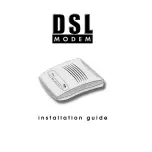
PACKET
10
Packet Mode
Packet-Radio is the communication of digital data via radio. A packet is a group of characters with
a flag and header at the beginning and a checksum and flag at the end. A flag is a specific charac-
ter used to signify the beginning and ending of a packet. The header is information concerning
who the packet is from, who it is to, any relay stations needed to get to the destination and some
control information. A checksum is a complicated mathematical formula that produces a number
that is unique to the combination of characters that are in the packet. This unique number is fig-
ured by every station that handles the packet and if it does not match the number that is in the
packet, the packet is thrown away, thus error-free communications. A packet is also called a
frame. The Terminal Node Controller (TNC) is the workhorse of Packet-Radio. As a listening device
it hears an audio signal from the radio, changes the data to digital form, determines if it is a good
packet and sends it to whatever device is attached, usually a computer. As a relay device it also
checks the packets it receives and determines if the packets need to be resent, then does so if ap-
propriate. As a sending device it receives digital data from the computer, packetizes it and changes
it into audio tones which are sent out to the radio. The rules the TNC uses to do all of this is called
a protocol.
The most used protocol in amateur Packet-Radio is AX.25 Level 2 and the nitty gritty details of the
inner workings can be found in a book named
AX.25 Amateur Packet-Radio Link-Layer Protocol
available from the ARRL. Most of you are not going to want to go that deep, the TNC takes care of
the nitty gritty for you, although there are parameters you can set that determine how efficiently
some of that work is done. In this section of the book we will discussing the fundamentals of how
to get on the air and how parameters interrelate. The default parameters will get most everyone
on the air, but by using this information, you can change your parameters to be most efficient in
whatever situation you find yourself.
Command Mode
In order to change parameters, or give any other instructions to the TNC, you must be in Com-
mand Mode. This is the mode you will be in when you turn on the TNC (unless you have changed
the PMODE parameter in the
KAM
). Once you have left Commend Mode for any reason, there is a
parameter called COMMAND that determines what special character you will use to return to Com-
mand Mode. This comes defaulted as a
Ctrl-C
. (While holding down the
control key
press
c
, then
release both.) All parameters are described in alphabetical order in the Commands Manual. When-
ever you enter Command Mode, the TNC will send a prompt to your screen that looks like this:
cmd:
Connected vs. Unproto
There are two ways to send data in Packet-Radio, connected or unproto (unconnected). In the
Command Mode you first establish a connection. Then your TNC will send packets to that specific
station and expects acknowledgments in return. If an acknowledgment is not received, the TNC
will resend the data (depending on the setting of AX25L2V2 it may send a poll first). The RETRY
parameter will determine how many times this is done before the connection is lost due to bad
conditions. If the acknowledgment is received, the TNC is happy and will send more data, when
available. Therefore the Connected Mode, barring impossible conditions, assures that the station
you are connected to, will receive everything you say and in the order you say it.
In the Unproto Mode your TNC sends a packet. As far as the TNC is concerned, the packet is not
directed to a specific station, therefore no acknowledgment is expected and no retrys are at-
tempted. This mode is often used for calling CQ and informal round table chit chats.















































